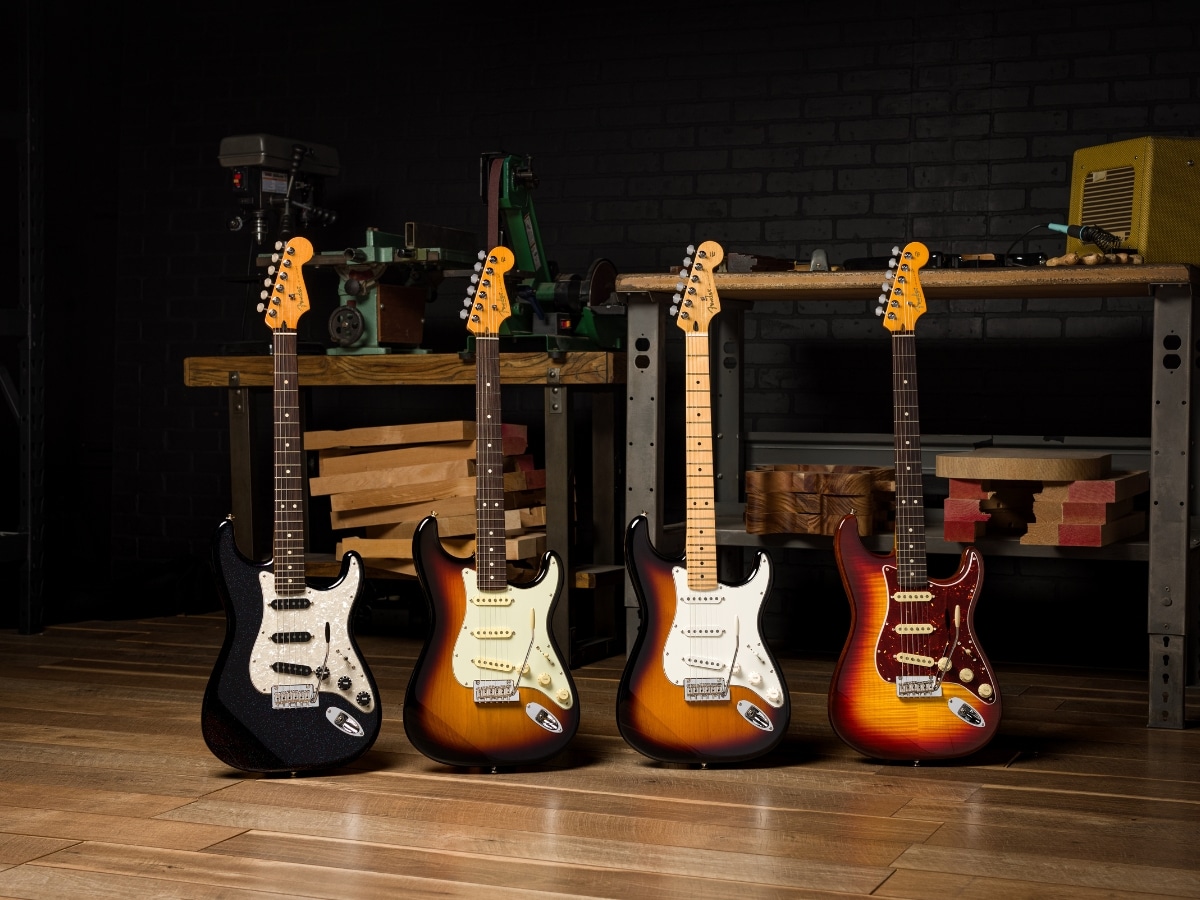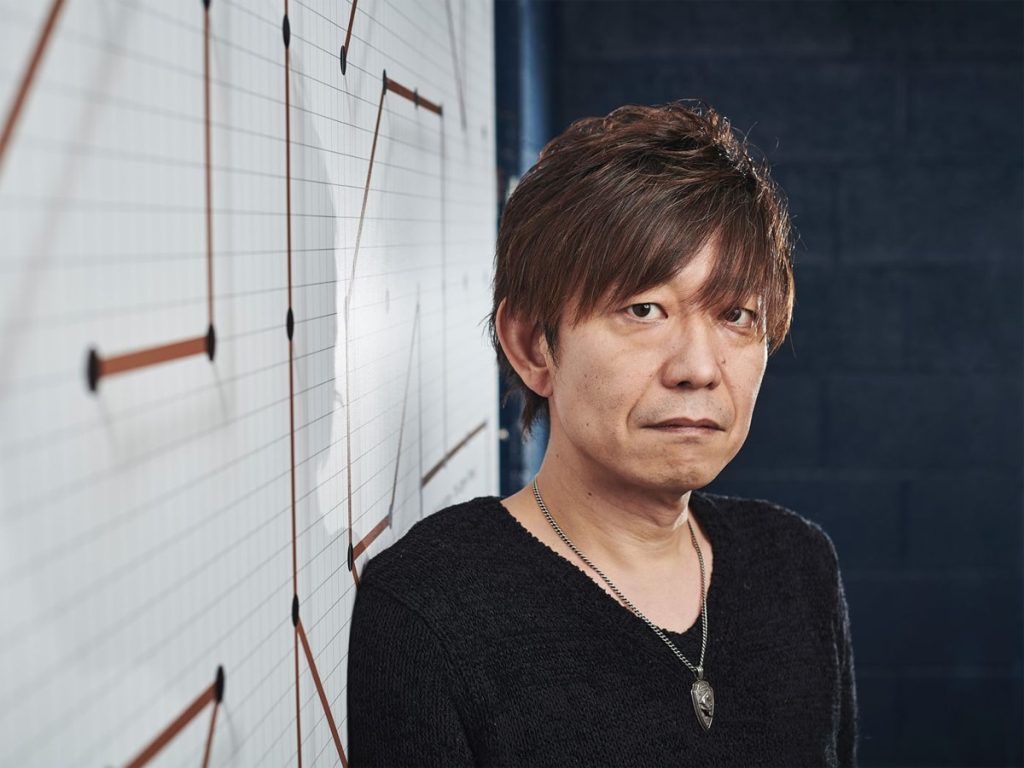Every product is carefully selected by our editors and experts. If you buy from a link, we may earn a commission. Learn more. For more information on how we test products, click here.
Some inventions simply change the world. From the distance-conquering effect of the automobile to the connectivity of the iPhone, the nutrition revolution ushered in by the refrigerator to the destructive force of the atomic bomb, for better or worse, the arrival of each of these creations marked a point in time that clearly separated the before from the after.
The Fender Stratocaster is just such an invention, and while I’d argue that it unquestionably falls into the ‘for better’ category, those who were in favour of maintaining the status quo at the time of its 1950s launch, on into the ’60s, ’70s and beyond, would have begged to differ. That’s because, upon its release 70 years ago, this strange-looking instrument helped to trigger a cultural tidal wave that we’re still feeling to this day.
So much more than a guitar, the Stratocaster has been a symbol of rebellion, self-expression, and freedom, and in the right hands, it continues to be so. It’s a trailblazing invention of such intuitive perfection on behalf of its creator, Leo Fender, that while it has seen a number of detours and tweaks throughout its time, it has essentially remained the same twin-horned revelation he first sculpted all those years ago.
Guitar Mecca Calling
Visiting Fender’s enormous facility in Southern California, it’s fascinating to observe how the modern Stratocaster is made. While I expected to see a highly mechanised operation in which the human element is largely focused on overseeing quality control, the reality couldn’t be more different. These guitars have impassioned people crafting and shaping them at every step of the process. This hands-on approach means that each and every guitar has its own personality — even two of the same model from the same run can feel entirely unique from one another. As such, a key piece of insight we’re given during our tour is that those in search of a Strat should just head to their local guitar shop and play as many as they can. Even if 10 guitars leave you cold, you’re guaranteed to find the one that speaks to you.
During my time at Fender HQ, I also sit down with members of the guitar maker’s team to discover how the Strat is perceived by those who know it best, as well as what’s next for this electric guitar archetype. Among these highly skilled artisans and professional guitar obsessives is David Brown. He’s one of the Fender Custom Shop’s master builders and a man who’s been playing, tinkering with, and building Strats on and off for the best part of five decades. When I ask what the Strat means to him, he’s very clear: “I think it’s the ultimate rock and roll machine. I’ve been playing Strats for most of the 48 years I’ve been playing guitar, so to me, it’s the perfect guitar when you’re talking about that timeless type of sound.”
As for the Strat’s impact throughout its seven decades of gigging, recording, and—from time to time—being smashed to smithereens or set on fire, David doesn’t hold back, “I don’t see rock and roll without that guitar. I can’t imagine rock and roll being what it is, what it was, or what it will be without it.”
It’s a salient point. The Stratocaster first appeared at a time when quality guitars were created through labour-intensive processes that saw luthiers invest hour upon exhaustive hour crafting each instrument, with the final products proving far too expensive for most people. This was particularly true for youngsters looking to get involved in this new fad called rock and roll. And it was at this point that Leo Fender threw a beautifully contoured, bolt-necked hand grenade into the middle of the music industry.
“That’s one of the things that Leo Fender did, right?” David enthuses with clear admiration. “He brought these instruments to the masses by making them inexpensive, easy to repair, easy to replace parts on, and easy to manufacture.”

The Musician’s Inventor
Leo Fender’s commitment to affordability helped ensure the Stratocaster would go on to empower generations of musicians. While there have certainly been some eye-wateringly expensive models over the years, ever since 1954, musicians have been able to walk into their local music shop and pick up a modestly priced Stratocaster that will help them bring their musical vision to life.
Sitting in Fender CEO Andy Mooney’s office, the walls are adorned with at least a dozen Strats that he owns personally. A long-time guitar devotee, Andy found his home at Fender in 2015—after lengthy stints at Nike and Disney—and since that time, his esteem for Leo Fender and the instruments he created has only grown.
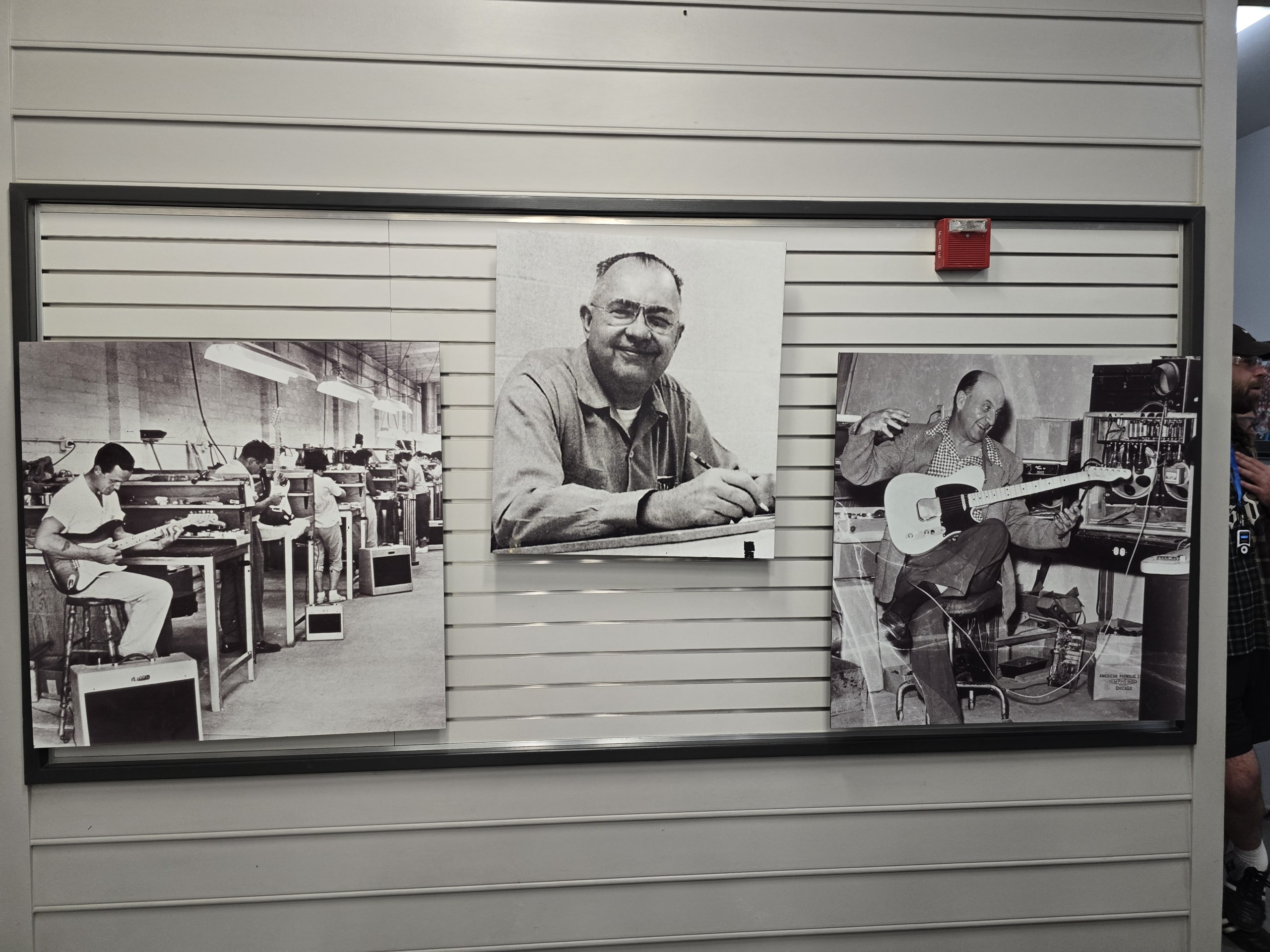
“The Stratocaster is all about form following function. You know, Leo wasn’t a player, but he was one of the world’s great listeners,” Andy reveals. ”He was totally adventurous in terms of design aesthetic, but with a singular goal in mind, which is it has to work for the working musician.”
The Fender founder’s non-musician status is something the team frequently returns to as we tour the production facility. His unique approach to guitar-making placed functionality and practicality above all else. By removing many of the labour-intensive but largely aesthetic elements of guitar making (like binding and the set-in neck), he created—somewhat ironically—one of the most beautiful pieces of industrial design in history.
The odds of a non-musician coming up with an instrument so perfect that it has spent 70 years setting the standard by which others are judged is hard to fathom. As David explains, “It’s like a mechanic who doesn’t drive inventing a killer car. That’s crazy. He’s at that level where he’s building these things that are just insanely classic and necessary. Without that, you know, rock and roll wouldn’t evolve. That’s at the beginning, the beginning of all that music.”
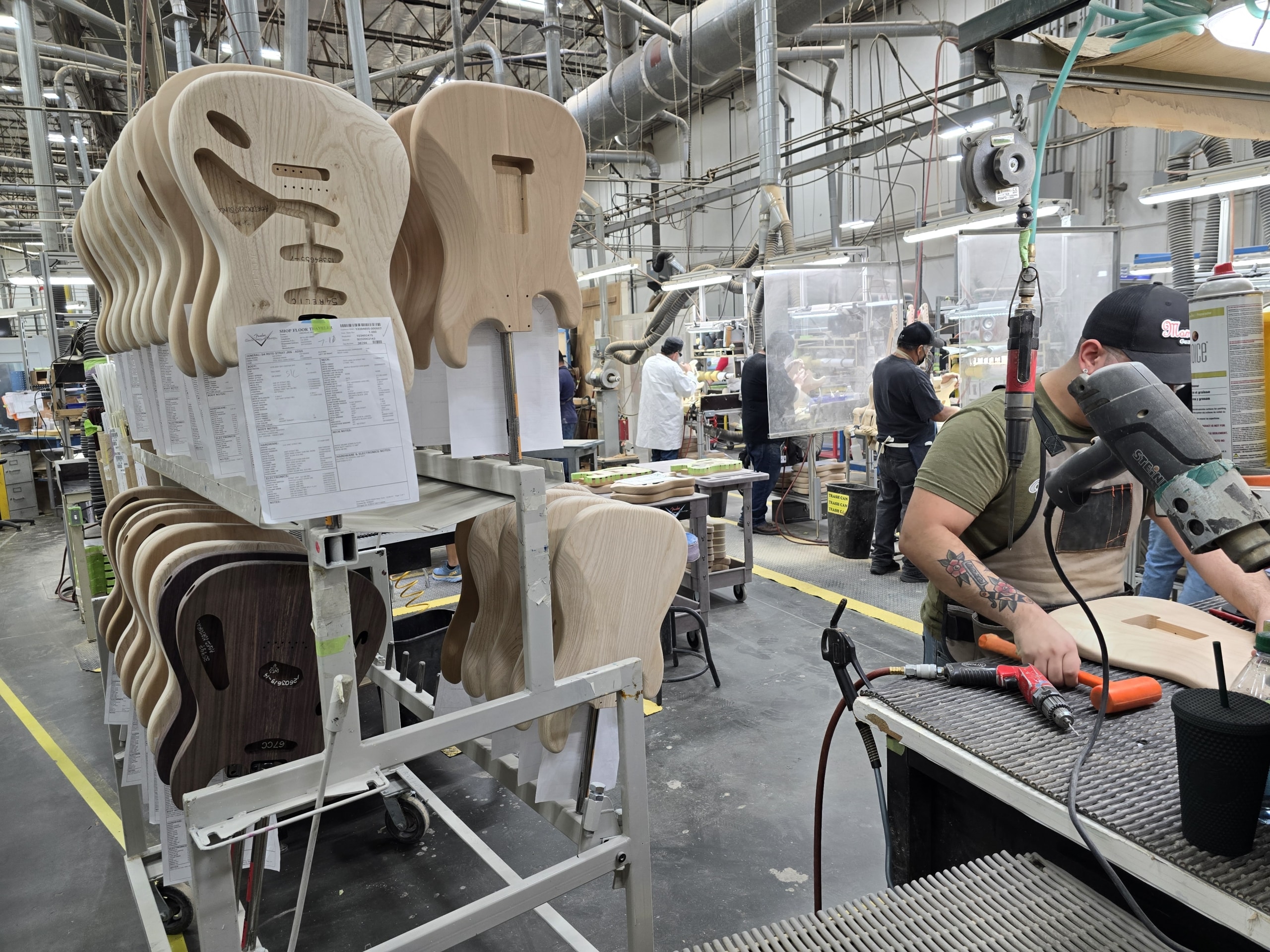
The Right Guitar For Any Era
It can be easy to lose sight of how remarkable that first Strat was. Following the release of the Telecaster in 1951, Leo Fender incorporated feedback he’d received from musicians and came up with a guitar boasting sculpted lines that hug the human form. Unlike its predecessor, this was a guitar that didn’t dig into your ribs or tenderise your forearm. And unlike the Tele’s charming but rudimentary design, the Strat sported a look suited to the space age.
While it’s fair to say that the Strat’s wow factor has lessened over time, ask yourself if that’s simply because you’ve grown used to it. Look again, and you may just see it for the extraordinary (and extraordinarily odd) piece of work it remains to this day.
I was reminded of this prior to my departure to the U.S., when I had some time to play around with the 70th Anniversary Ultra Stratocaster HSS. Rather than a more standard-looking model boasting, for example, a black body with a white scratchplate, this guitar had a remarkable violet pearly iridescent finish paired with a black scratchplate and roasted maple neck. The stunning colour of the body changed with the light, and the overall effect was like seeing the Strat for the first time. It looked like the kind of guitar an alien might play—if that alien also happened to be Prince—and it was a powerful reminder of how people must have felt when the Stratocaster debuted.

In the time since that unveiling, the Strat’s shape has become the one almost everyone calls to mind when asked to think of an electric guitar. As Andy sees it, “I think the form has certainly become synonymous with electric guitars. If you asked a kid to go draw an electric guitar, that would be the shape they’d give you.”
Talking with Andy, it becomes clear that while the core of the Strat has never wavered, there have been more tweaks over the years than one might detect at a glance, from materials and pickup wiring to the endless debate over large or small headstocks. But for Fender, these are more about refining the instrument and creating a more perfect and contemporary representation of Leo Fender’s original mission: make a guitar that modern musicians want to play and can afford. And for anyone who doesn’t want any of the tweaks and touches added over time, you can still buy a new model that’s essentially that same 1954 Strat, just made 70 years later.
“I kind of compare it to the Porsche 911,” Andy explains. “In the case of the 911, there are some people who like the original, but when you compare it to the new 911, you kind of miss all of the modern electronics that have been added over the years.”
He continues, “In our case, if you really love the original 1954 Strat, you can still get it. You can get it absolutely spot-on perfect. But if you want a guitar that’s reflective of what contemporary musicians are telling us, you should buy the Ultra.”
This commitment to listening to musicians goes all the way back to the Telecaster feedback that spurred Leo Fender to create the Strat in the first place. And it’s clear that delivering practical and functional products remains core to the brand. Interestingly, this draws a parallel between Fender and one of Andy’s former employers.
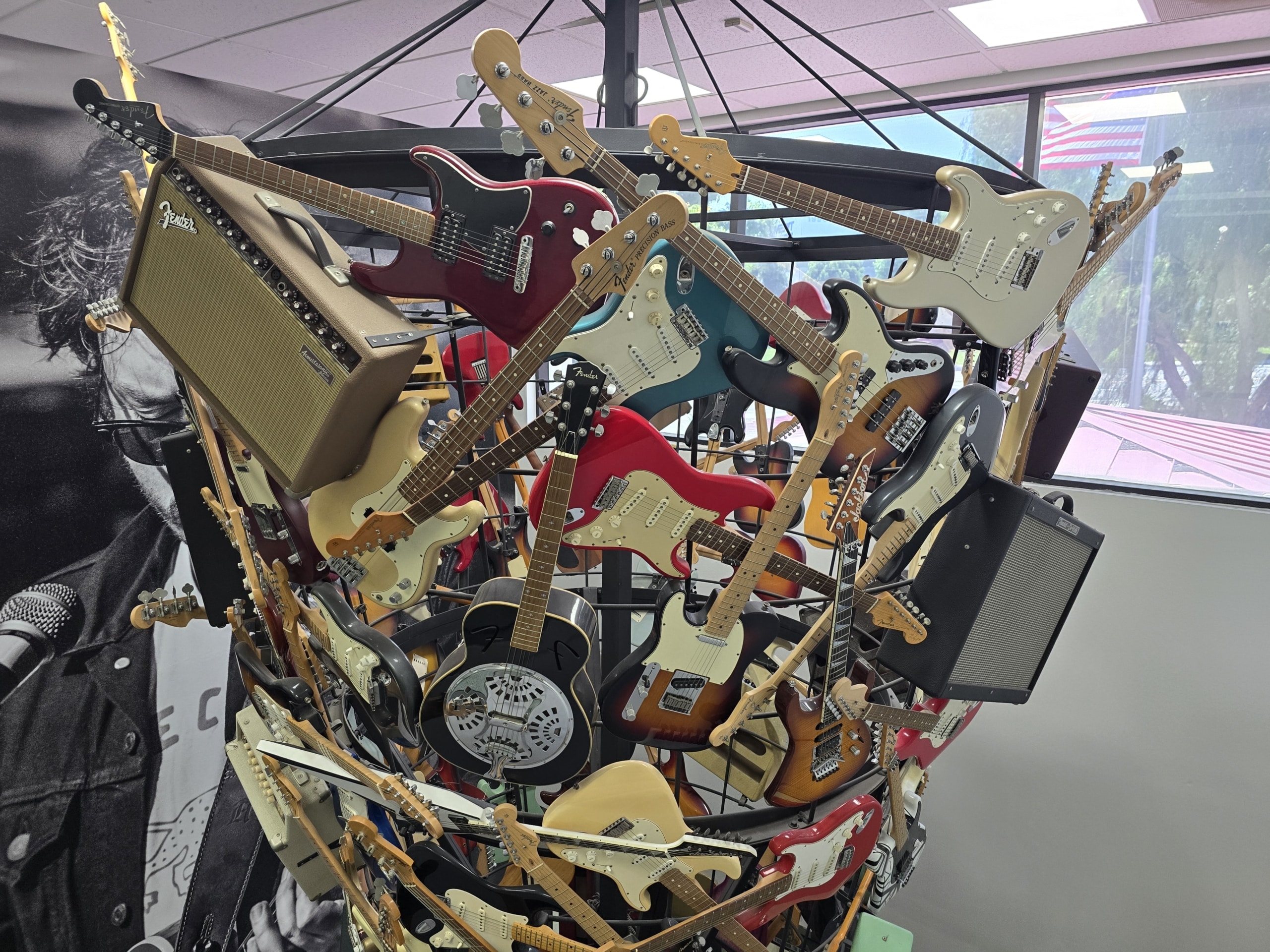
The Nike of Guitar Makers
As a man who spent 20 years working for Nike, Andy is uniquely positioned to compare the Stratocaster to one of that brand’s most iconic pieces of footwear. At first when I suggest it might be Jordans—given the legendary status of both guitar and shoe—he pauses before ultimately drawing a different conclusion.
“I’m thinking about your question,” he says, looking towards the ceiling. “Because I think for me, it’s actually more about the Air Force One than it is about the Jordan, and I’ll tell you why. The designer for the Air Force One is a guy called Bruce Kilgore, and I was like a budding product line manager at the time he came up with it. I remember the pitch right now.
“There’s a circle on the Air Force One’s outsole that was designed so that you could pivot better on the court. It originally came with what was called the proprioceptive belt around the ankle that gave you instant feedback if you were likely to go over on your ankle. So every single bit of it was done with functional raison d’etre.”
By way of clarification, I ask if he means that the Stratocaster and the Air Force One are both, at their core, focused on delivering practicalities that make the user a better player, whether on the court or on the stage.
“Exactly. In comparison, Tinker Hatfield’s Jordan design was more about meshing contemporary culture—what was happening in the world—with the shoe. Because Michael (Jordan) never really gave much in the way of input; Michael did the thumbs up or thumbs down, and very rarely thumbs down in Tinker’s case.
“In my view, Tinker did a lot of functionally great shoes, but I think Jordans were more an exercise in design and contemporary art than they were functionality. So for me, the analogy for the Stratocaster is stronger with the Air Force One.”
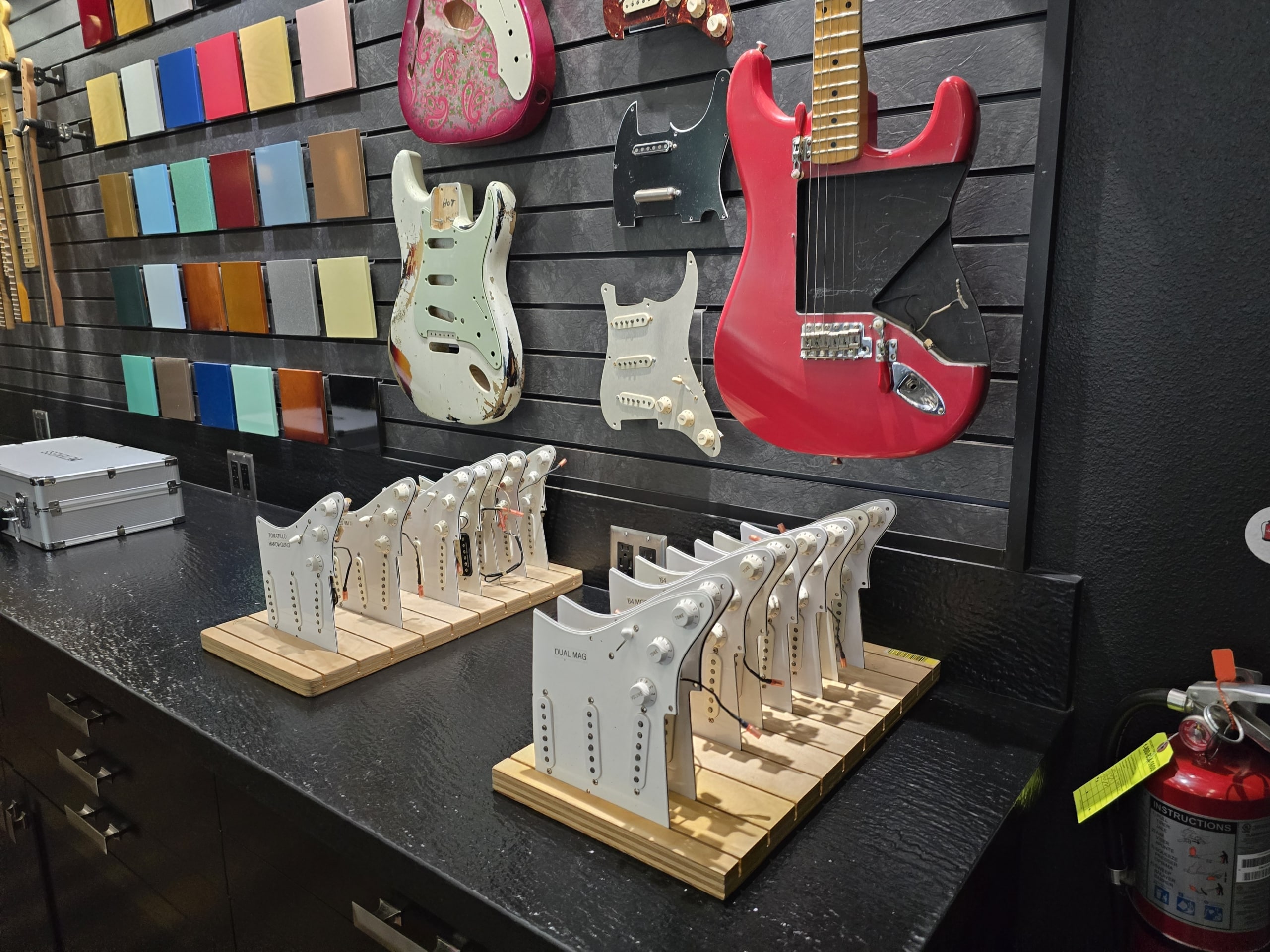
As Futuristic as Ever
Looking ahead, while the days of wailing guitar solos dominating the Billboard Hot 100 have long since passed, the Stratocaster’s role is still evolving, and there are many who believe its best days are still ahead of it. Among their number is Tom Morello. Another, perhaps unsurprisingly, is the EVP of Fender Products, Justin Norvell.
“I totally agree with that, because every time you think it’s mostly been done, someone will just come out and reinterpret it and use it in a way where there’s a whole new thing,” he says. “It’s a young instrument, and it will continue to develop as time goes on. Because, in our design group, we’re always asking, how do we make it better?”
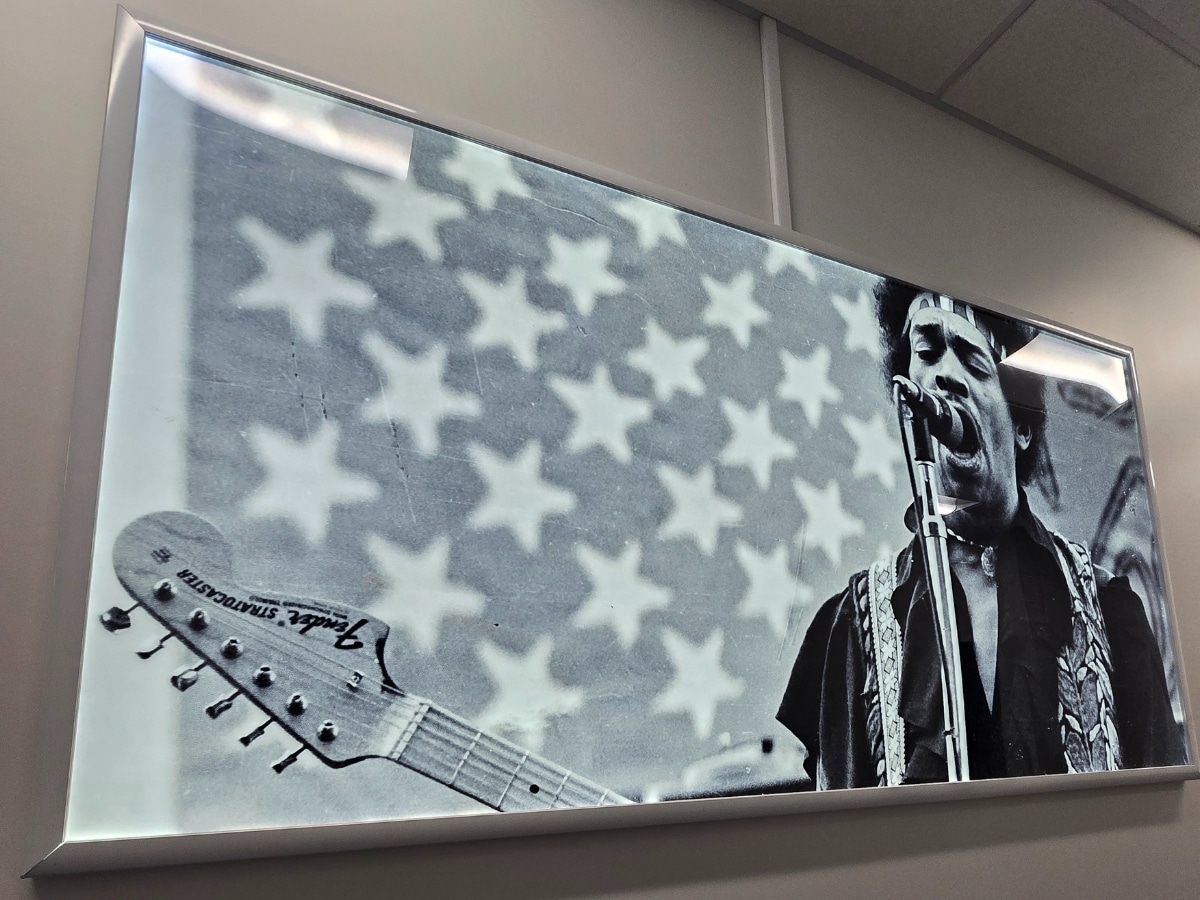
David concurs, saying, “It will be pretty much the same as it is now, the same as it’s always been, but with possible hardware and materials updates. We’ve experimented with synthetic fingerboards and other things in the past; bodies made out of carbon fibre or even plastic or resin. But I think the nature of the instrument, it being wood, and strings, and steel, and wire, it’s going to pretty much stay the same.”
It’s comforting to hear that the guitar design wielded by everyone from Buddy Holly to Jimi Hendrix, the Strokes’ Albert Hammond Jr. to H.E.R. isn’t going anywhere. There’s every reason to believe the Stratocaster will remain a potent force for decades to come, provided Fender continues to drive its evolution in line with the shifting needs of modern musicians while simultaneously staying true to the undeniable genius of Leo Fender’s 70-year-old blueprint.
Justin describes this as “painting inside the lines,” and having now visited the home of the Stratocaster, I have a renewed appreciation for what beautifully sculpted lines they truly are.
As we part ways, Andy jests, “It’s tough to improve upon perfection.” Nonetheless, I look forward to watching Fender continue in its tireless mission to do so.
